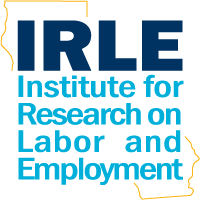Contact: Jackie Sullivan, (510) 604-2289, IRLE Communications, UC Berkeley
New York’s policy of paying tipped workers a subminimum wage is under scrutiny, with a series of hearings called by Governor Cuomo that begin Friday, April 20. In a new policy brief, Sylvia Allegretto, an economist and co-chair of the Center on Wage and Employment Dynamics at the Institute for Research on Labor and Employment, University of California, Berkeley, examines the benefits of eliminating the subminimum wage in New York.
The two-tiered wage system and how it works is often misunderstood. It is dependent upon the ‘tip credit’ provision—which represents how much of a worker’s wage an employer can avoid paying as long as customer tips plus the subminimum wage add up to the regular minimum wage. The customer provided wage subsidy is a third of a tipped workers’ wage in New York—and it will continue to be so even after the 2016 policy is completely phased in.
New York is considering joining the ranks of the seven states that currently do not allow a subminimum wage to be paid to tipped workers. In these seven states the restaurant industry is thriving without a subminimum wage—where tipped workers are paid a full minimum wage plus tips. Over the last five years, employment growth in the full-service restaurant industry in the seven one-wage states (Alaska, California, Minnesota, Montana, Nevada, Oregon, and Washington State) have all outpaced overall private sector growth by an average of five percent. So, a cautious phase-out of the subminimum wage in New York is viable.
About tipped workers in New York:
- Tipped workers in New York are typically low-wage earners who live in poverty at more than twice the rate of other working New Yorkers—15 percent compared to 6.2 percent, respectively.
- Bartenders and servers, who make up the largest share of the tipped workforce, typically earn about $11.00 an hour.
- The median age of tipped workers in New York is 35 and the vast majority (77 percent) is at least 25 years old. The tipped workforce across all industries in New York is majority female (52 percent), and of those women more than one in three (37 percent) have children.
- The average full-time, year-round, female tipped worker is paid 78 percent of what her male counterpart earns. Over the course of a lifetime this amounts to a gender tax of $261,000. Even as most wait staff are female, males are more likely to work at high-end establishments.
The brief also addresses other issues that pertain to the two-tiered policy and the tipped workforce including: constantly changing schedules that greatly determine pay, enforcement and monitoring of the two-tiered policy, the lack of benefits, low pay and poverty, and sexual harassment issues.
The full policy brief is here: Should New York Eliminate its Subminimum Wage?
More information about and other reports by Dr. Allegretto can be found at CWED (the Center for Wage and Employment Dynamics), UC Berkeley. Contact her at allegretto@berkeley.edu.
